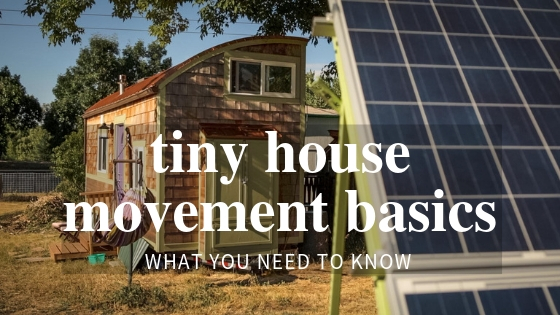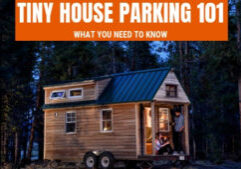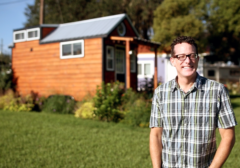
Everything You Need to Know About the Tiny House Movement: the Basics
The trend towards tiny homes has become a sweeping social movement. Discover the key underpinnings of the tiny house movement.
Have you ever felt bogged down by your house and possessions? Tempted to downsize your living situation in a big way?
That's what the tiny house movement is all about, consciously simplifying. It's a new (or revived) approach toward defining what a home is—and how much space and stuff it takes to be happy.
There are many benefits to and motivations for jumping on the tiny house living bandwagon.
Here are some essentials to know about the perks, challenges, and the general characteristics of tiny house living.
Tiny House Movement at a Glance
The first thing that newcomers to the tiny house movement wonder about is just how small these homes are.
Tiny homes are small houses, for sure. Compared to the size of the typical American home of 2,386 feet, a tiny house is typically considered 100 to 400 square feet.
But despite the smaller scale, tiny homes vary in design and shape. Some come in the form of tiny houses on wheels, cottages, or even repurposed shipping containers.
Tiny houses don't have to be just bare-bones boxes without character or extra minimalist. Many people create efficiently designed yet impeccably decorated spaces, and what some refer to as "luxury" tiny homes.
Tiny House Living Motivations
For many who join the tiny home movement, though, the motivation is to reduce the amount they spend and consume and live a simpler life—a less is more lifestyle concept. It's a way to create a higher quality of life by better utilizing your time, energy, and finances.
Save Money
Living in a tiny home can drastically reduce the amount of money people spend on housing costs like taxes, insurance, mortgages, and repairs. That means more money can be dedicated toward saving for the future and reducing month-to-month strain. Or perhaps using extra expendable income to use toward pursuing your passions, like travel or starting your own small business.
And the price of acquiring a tiny house can be considerably lower than your average full-size home. While the amount varies, tiny homes can cost less than $25,000 if you're a savvy DIY-er.
On the other end of the spectrum, some people shell out $65,000 or more for professionally-built upscale and decked-out tiny homes.
Other pricey expenses may come into play—such as off-grid utilities—but tiny homes are still generally a much more affordable option.
Research what makes the most sense for you and your budget, and look into inexpensive alternative housing ideas.
Freedom to Move
Another big motivator for tiny house living is flexibility. Want to move with your home when significant life changes arise, or move around with it in search of your ideal city? Then this could be an excellent option for you. Though, there are challenges to consider, such as zoning rules that determine where you can park your tiny home. But generally speaking, picking up and moving is much less of a hassle than with a traditional home.
There are also tiny house communities springing up in the country. Tiny homeowners can share land, outdoor space for gardening and recreation, and gain a sense of community.
Green and Simpler Living
It's no surprise that those who support the tiny house movement also value living more sustainably. Tiny house living is more environmentally friendly because it reduces energy usage and waste.
Some people even go so far as to live completely independent from the electrical grid.
Tiny Home Living Challenges
Living in a tiny house does not come without challenges. There is drastically less space, which can make starting or growing a family an issue, especially as your kids become teenagers and desire more privacy.
You also need to consider local zoning laws and building codes that govern where you can put your tiny home. This is especially important if you are not comfortable living "under the radar." Watch our documentary series, Living Tiny Legally to learn more.
But for those who embrace everything the movement offers, these challenges could be minimal compared to the payoff of a more fulfilling and more balanced life.
Join the Movement
Interested in keeping up with all things related to the tiny house movement? Keep browsing our site and blog for resources and tips on making a transition to tiny house living and loving it.





